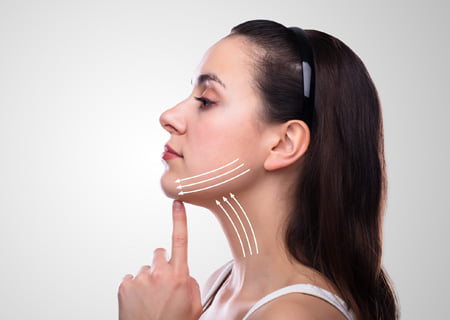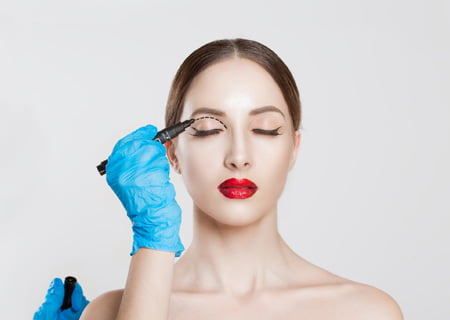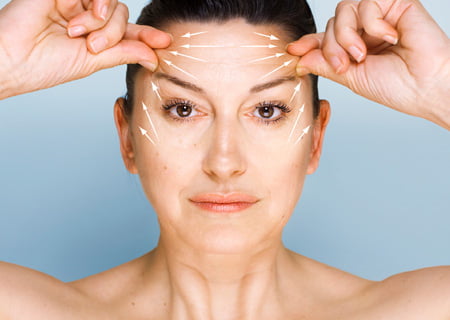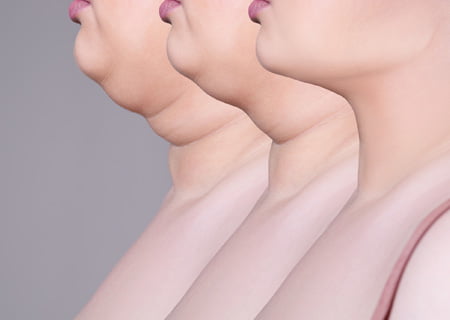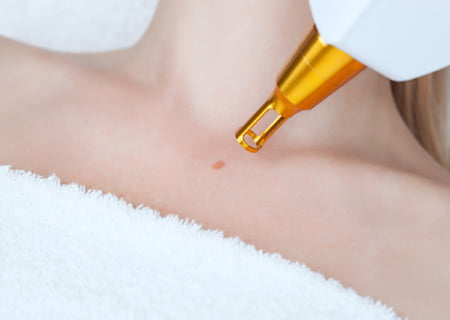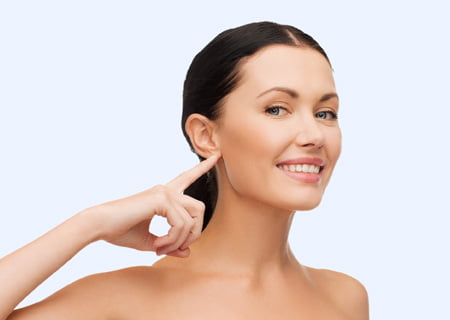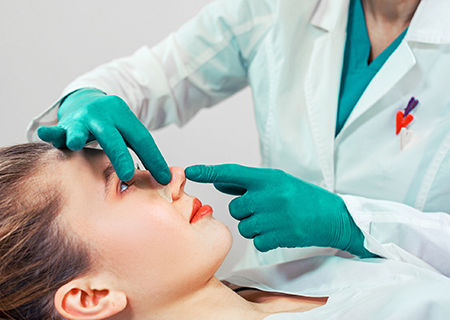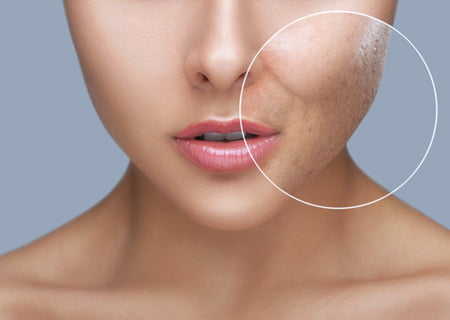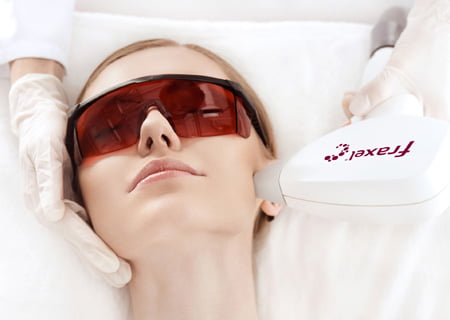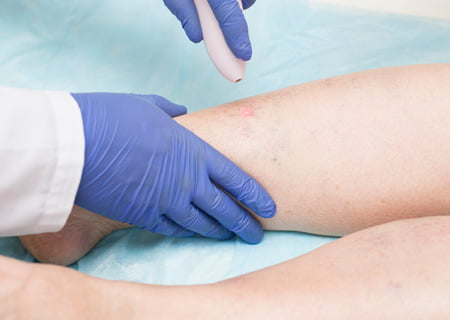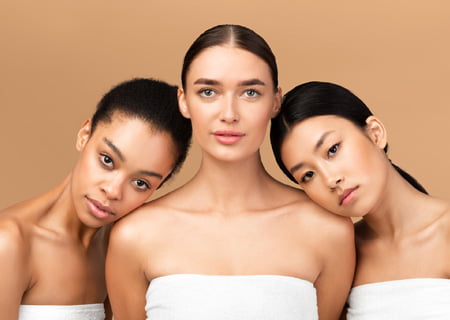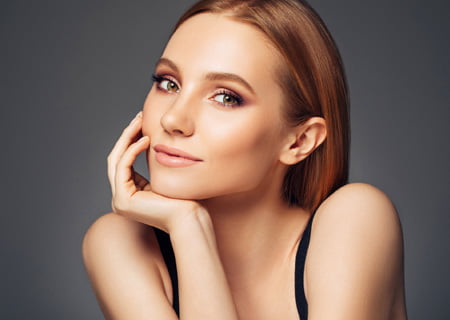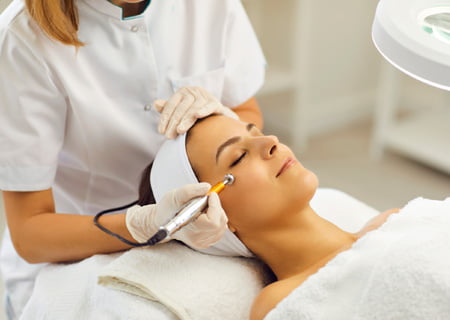Laser Vein Therapy Explained in Layman's Terms
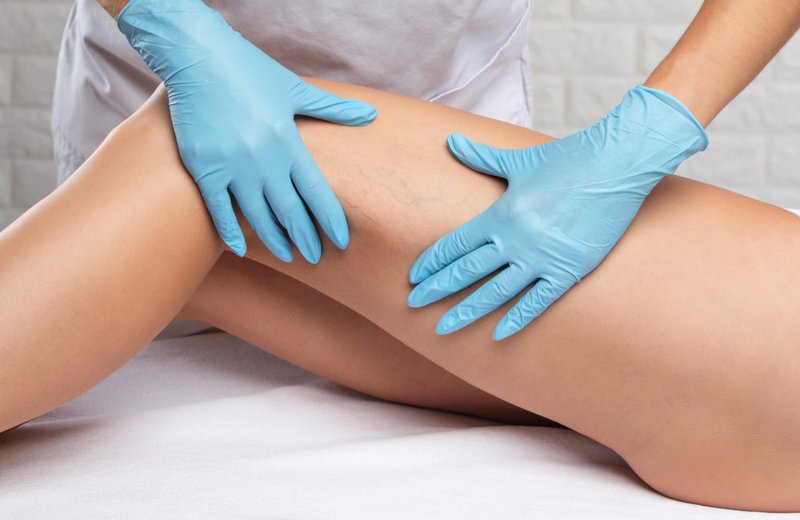
In the realm of beauty enhancement, many people are on a quest to enhance their looks and boost their self-esteem.
Over the past few years, laser vein therapy, among a plethora of treatments, has garnered attention due to its proven efficacy in tackling vascular problems like spider veins and ruptured capillaries. Despite this rise in popularity, however, grasping the complexities of this treatment can be daunting for those unfamiliar with medical terminology.
What Are Spider Veins and Broken Capillaries?
Before delving into laser vein therapy, it's essential to understand the culprits it aims to treat: spider veins and broken capillaries. These common vascular issues can mar your complexion and cause self-consciousness.
Spider Veins
Spider veins, also known as telangiectasias, are tiny, extended blood vessels that show up near the skin's surface. They often mimic the appearance of a spider's web or tree branches and exude a red, blue, or purple colour.
People also search
These veins are commonly found on the face, legs, and various other body parts. Although they usually pose no health risks, their presence can be visually displeasing.
Broken Capillaries
Broken capillaries, on the other hand, are tiny blood vessels that become damaged and visible through the skin. They usually appear as red or purple streaks or blotches.
Broken capillaries can develop due to various factors, including sun exposure, aging, and skin trauma. Like spider veins, they can affect facial aesthetics and diminish one's confidence.
Understanding Laser Vein Therapy
Laser vein therapy , alternatively referred to as laser vein removal or treatment, is a non-surgical medical process aimed at eradicating spider veins and broken capillaries on various body parts including the face. This procedure utilizes finely-tuned laser technology, which can accurately pinpoint and eliminate undesired blood vessels while leaving the adjacent skin unharmed.
At its core, laser vein therapy operates on the principle of selective photothermolysis. In simpler terms, it uses the specific wavelength of light that is absorbed by the blood vessels while sparing the surrounding tissue.
Targeting the Veins
During the procedure, a trained practitioner will guide a specialized laser device over the affected area. The laser emits a concentrated beam of light, which is absorbed by the hemoglobin (the pigment in blood) in the unwanted vessels.
Heat and Closure
As the laser energy is absorbed, it heats up the blood vessels, causing them to constrict and collapse. This process is crucial because it effectively seals off the problematic vessels.
Natural Elimination
Over time, the treated veins are gradually absorbed and eliminated by the body's natural processes. The veins fade from view, leaving behind smoother, more even-toned skin.
Is Laser Vein Therapy Painful?
One of the primary concerns for individuals considering laser vein therapy is the level of discomfort involved. Fortunately, this procedure is relatively painless.
Most people describe the sensation as a mild snapping or tingling feeling, often likened to the snap of a rubber band against the skin. Some discomfort may be experienced, but it is generally well-tolerated, and many providers offer topical numbing creams to minimize any potential discomfort.
The Benefits of Laser Vein Therapy
Now that you know how laser vein therapy works, it’s also important to explore its numerous advantages, which extend beyond just improving your facial appearance.
Improved Aesthetics
The most immediate benefit of laser vein therapy is improved aesthetics. By eliminating spider veins and broken capillaries, this procedure can help you achieve a smoother, clearer complexion.
Say goodbye to those unsightly red and purple marks that have been bothering you for years.
Boost in Confidence
Feeling good about your appearance has a direct impact on your self-confidence, and laser vein therapy can give you the confidence boost you need to step out into the world with a renewed sense of self-assuredness. No longer will you feel the need to hide behind layers of makeup or concealer.
Non-Invasive and Minimal Downtime
Unlike surgical procedures, such as vein stripping, laser vein therapy is non-invasive.
There are no incisions, sutures, or lengthy recovery periods. Most patients can resume their regular activities immediately after the treatment, making it a convenient option for those with busy schedules.
Long-Lasting Results
While multiple sessions may be required to achieve optimal results, the effects of laser vein therapy are long-lasting. Once the targeted veins have been eliminated, they typically do not return. However, it's essential to maintain a healthy lifestyle and protect your skin from excessive sun exposure to prevent the development of new spider veins or broken capillaries.
Potential Risks and Side Effects
As with any medical procedure, laser vein therapy comes with some potential risks and side effects. It's crucial to be aware of these before deciding to undergo treatment.
Temporary Redness and Swelling
Immediately after the procedure, you may experience mild redness and swelling in the treated area. These side effects are usually temporary and subside within a few days. Cold compresses and over-the-counter pain relievers can help alleviate any discomfort.
Skin Discolouration
In rare cases, laser vein therapy may lead to temporary skin discoloration, particularly in individuals with darker skin tones. This typically resolves on its own, but it's essential to discuss any concerns with your healthcare provider.
Bruising and Scarring
While uncommon, bruising and scarring can occur as a result of laser vein therapy. To minimize the risk of these side effects, it's crucial to choose an experienced and qualified practitioner who uses the appropriate laser technology for your skin type and concerns.
Infection and Burns
Although extremely rare, the risk of infection or burns exists with any medical procedure. To mitigate these risks, ensure that you choose a reputable and accredited medical facility for your laser vein therapy.
Who is a Suitable Candidate?
Laser vein therapy is generally safe and effective for a wide range of individuals. However, it may not be suitable for everyone.
Skin Type
The effectiveness of laser vein therapy can vary based on your skin type and colour.
In general, individuals with fair to light skin tend to have better results, as the laser is more easily absorbed by the hemoglobin in the blood vessels. However, advances in technology have made it possible for those with darker skin tones to benefit from laser vein therapy as well.
Health Status
Your overall health plays a crucial role in determining your candidacy for laser vein therapy. It's essential to inform your healthcare provider of any medical conditions, medications, or allergies you have. Pregnant women are also typically advised to postpone this treatment until after childbirth.
Realistic Expectations
Having realistic expectations is key to a successful outcome. While laser vein therapy can significantly improve the appearance of spider veins and broken capillaries, it may not provide perfect results.
Your practitioner will discuss what you can reasonably expect from the treatment during your initial consultation.
The Laser Vein Therapy Process
Let's take a closer look at what you can expect when undergoing laser vein therapy.
Consultation
The journey typically begins with a consultation with a qualified healthcare provider. During this consultation, your provider will assess your specific concerns, medical history, and skin type. They will also discuss the procedure, its benefits, potential risks, and what you can expect in terms of results.
Pre-Treatment Preparations
Before the actual treatment, there are a few essential preparations to keep in mind:
- Avoid Sun Exposure : It's crucial to protect your skin from excessive sun exposure in the weeks leading up to the procedure. Sunburned skin is more sensitive and can be more prone to adverse reactions.
- Avoid Certain Medications : Your provider may advise you to avoid medications or supplements that can increase the risk of bruising, such as blood thinners and certain herbal supplements.
The Treatment Session
On the day of the treatment, you'll be asked to arrive with a clean face, free of makeup and skincare products. The procedure itself typically takes anywhere from 15 minutes to an hour, depending on the size and number of the treated areas.
Your provider will guide the laser device over the targeted veins, delivering the precise amount of energy needed to achieve the desired results.
Post-Treatment Care
After the procedure, your provider will provide you with post-treatment care instructions. These may include:
- Avoid Sun Exposure : Continue to protect your skin from the sun, as it can exacerbate post-treatment redness and swelling.
- Gentle Skincare : Use gentle skincare products and avoid harsh chemicals or exfoliants on the treated area for a specified period.
- Follow-Up Sessions : Depending on the severity of your vascular issues, you may need multiple sessions spaced several weeks apart to achieve optimal results.
Laser Vein Therapy vs. Other Treatments
To help you make an informed decision, it’s essential to compare laser vein therapy to some alternative treatments for spider veins and broken capillaries.
Sclerotherapy
Sclerotherapy is a popular treatment for larger veins, particularly those on the legs. It involves the injection of a sclerosing solution into the vein, causing it to collapse and gradually fade away. While effective, sclerotherapy is invasive and may require multiple injections.
Vein Stripping
Vein stripping is a surgical procedure used for more severe cases of venous insufficiency. It involves the removal of the affected vein through small incisions. This procedure is more invasive and typically requires a more extended recovery period than laser vein therapy.
Intense Pulsed Light (IPL) Therapy
Intense Pulsed Light (IPL) therapy is another non-invasive option for treating vascular issues. IPL uses a broad spectrum of light to target the pigment in the blood vessels, effectively closing them off. However, IPL may not be as precise as laser vein therapy and may require more sessions to achieve comparable results.
Is Laser Vein Therapy Safe?
Laser vein therapy is considered safe when performed by a qualified and experienced healthcare provider. The procedure has been used for many years to effectively treat vascular issues like spider veins and broken capillaries. However, like any medical treatment, there are potential risks and side effects, such as temporary redness and swelling.
To ensure your safety, it's crucial to choose a reputable medical facility and follow your provider's pre and post-treatment instructions carefully.
How Many Sessions Will I Need?
The number of laser vein therapy sessions you'll need depends on the severity of your vascular issues and your desired results.
Some individuals see significant improvement after a single session, while others may require multiple treatments spaced several weeks apart for optimal results. During your initial consultation, your healthcare provider will assess your specific needs and provide you with a personalized treatment plan.
Is Laser Vein Therapy Painful?
Laser vein therapy is generally well-tolerated and considered relatively painless. Most patients describe the sensation as a mild snapping or tingling feeling, similar to the snap of a rubber band against the skin, and while some discomfort may be experienced, it is usually brief and manageable.
Many providers also offer topical numbing creams to minimize any potential discomfort during the procedure. After the treatment, you may experience mild redness and swelling, but these effects typically subside within a few days.
At the end of the day, laser vein therapy is a non-invasive, effective, and relatively painless procedure that can significantly improve the appearance of spider veins and broken capillaries. It offers numerous benefits, including enhanced aesthetics, increased confidence, and minimal downtime. While there are potential risks and side effects to consider, choosing a qualified practitioner and following post-treatment care instructions can help mitigate these concerns.
If you've been struggling with spider veins or broken capillaries and are seeking a safe and efficient solution, laser vein therapy may be the answer. Consulting with a reputable healthcare provider to determine if you are a suitable candidate and to discuss your specific goals and expectations is paramount.
Don't let vascular issues hold you back from feeling your best. Consider laser vein therapy with Facial Cosmetic Surgery and take the first step towards achieving smoother, more radiant skin. Reach out to us today to schedule a consultation and embark on your journey to facial rejuvenation.
Ready to transform your skin with laser vein therapy? Contact us at Facial Cosmetic Surgery today to schedule a consultation and discover how you can achieve smoother, more radiant skin. Don't let vascular issues hold you back from feeling your best!

